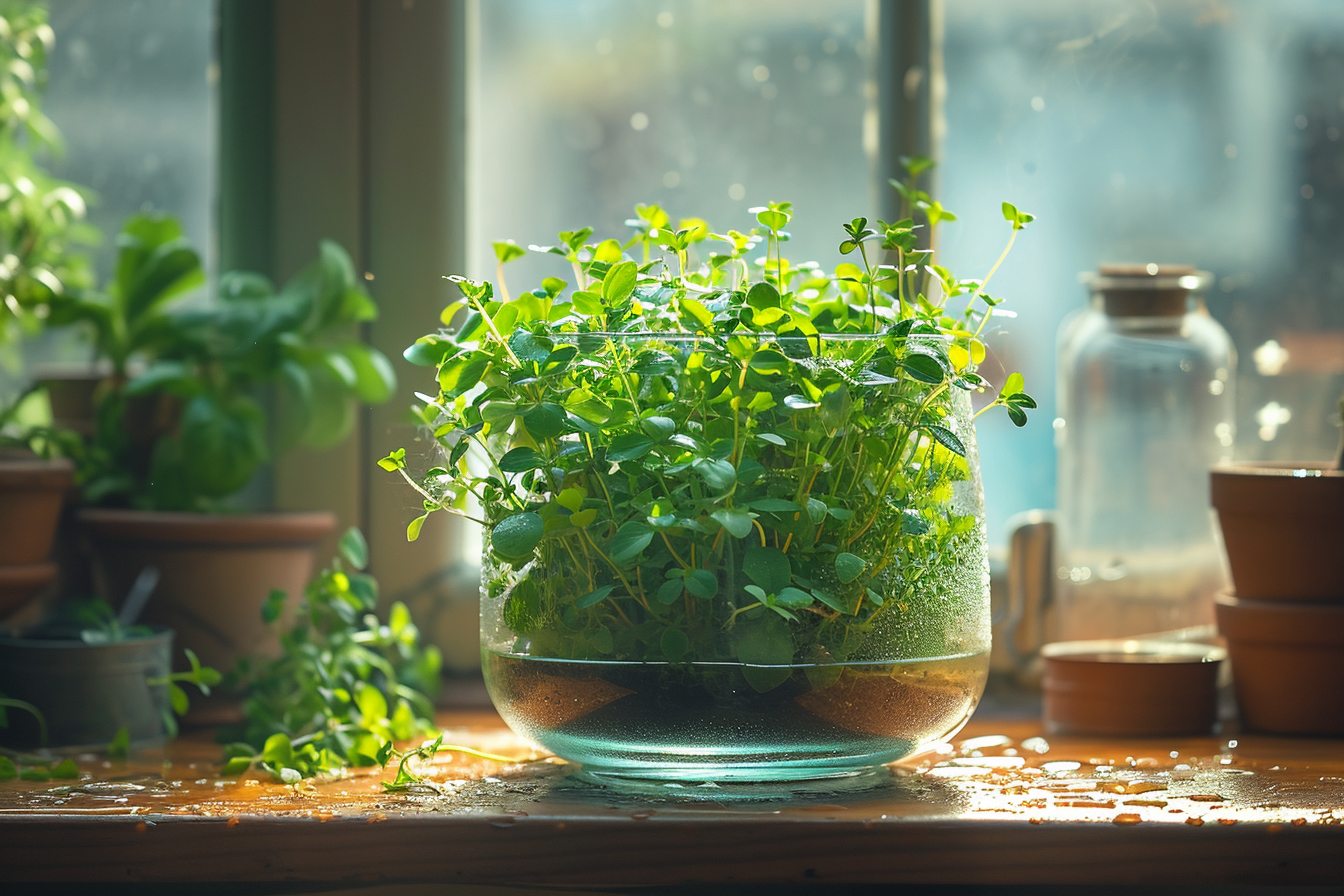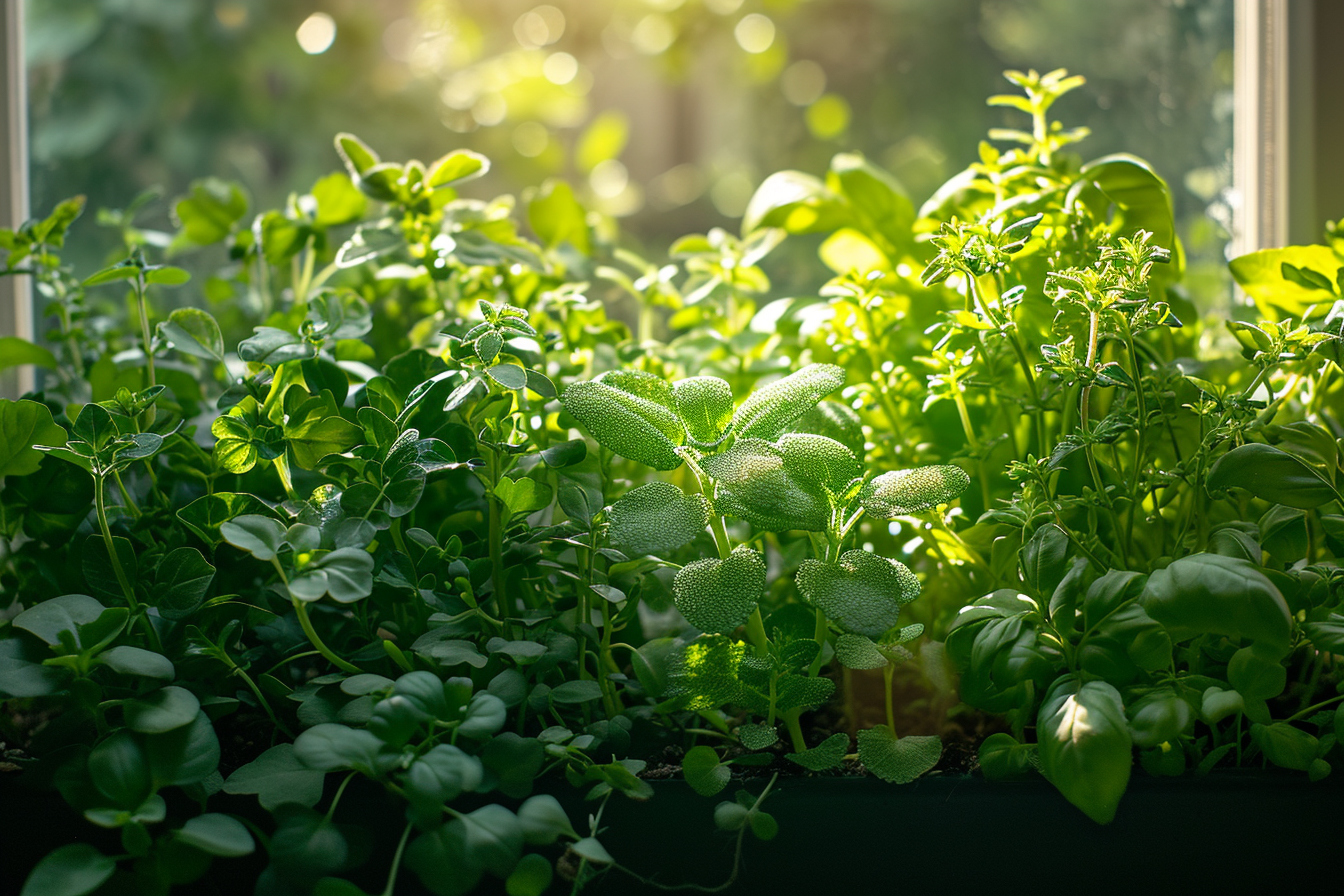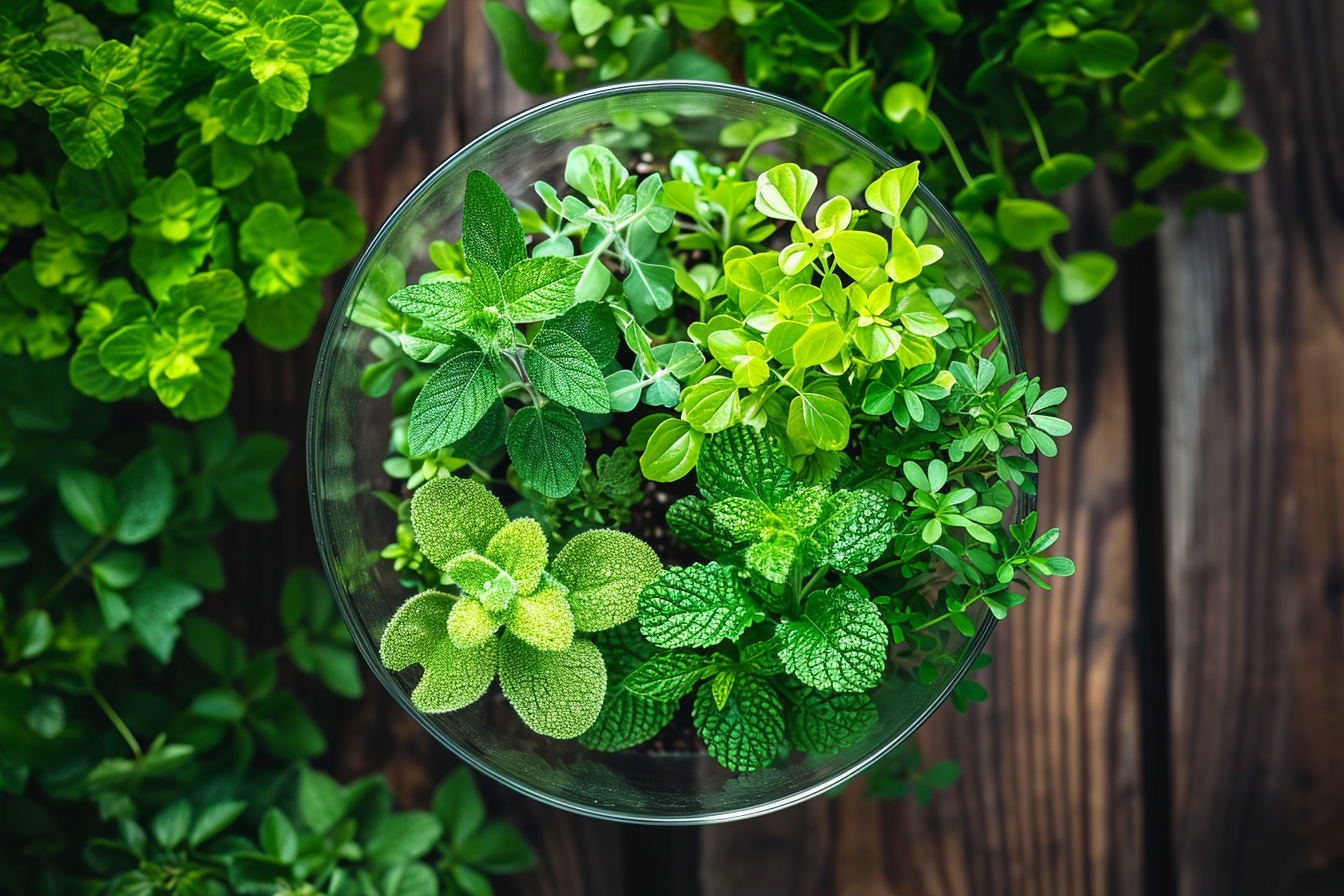Terrarium gardening has emerged as a captivating pursuit for plant enthusiasts who wish to bring a fragment of the natural world into their living spaces. This pursuit combines horticulture with artistic design, resulting in an enchanting miniature ecosystem that not only enhances the aesthetics of an environment but also offers a sense of tranquility and accomplishment to the cultivator. Meticulous attention and informed practices are imperative for successfully growing rare aromatic plants in terrariums, which are highly sought after for their unique fragrances and potential health benefits.
Understanding terrariums: a primer
Before diving into the specifics of cultivating aromatic plants within the confines of glass, it is essential to comprehend the two primary types of terrariums: closed and open. Closed terrariums are airtight environments that simulate a tropical climate, by retaining moisture and warmth, making them ideal for moisture-loving plants. Open terrariums, on the other hand, do not have a seal and are suitable for plants that thrive in drier, less humid conditions.
It’s paramount to recognize that the success of a terrarium largely hinges on the equilibrium of elements within it. Light, water, soil, and air circulation are the fundamental factors that must harmonize to foster a stable environment for plant growth.
Choosing the right vessel
Selecting an appropriate container sets the stage for the entire terrarium. The container’s role extends beyond mere aesthetics; it determines light access, moisture retention, and air circulation. Glass vessels with wide openings are preferable for rare aromatic plants, as they allow for ample air exchange and make maintenance tasks more manageable.
Crafting the perfect microclimate

lighting
Rare aromatic plants, such as certain exotic herbs, demand precise lighting conditions. Light is the catalyst for photosynthesis, but in a terrarium setting, direct sunlight can escalate quickly into an overheated environment that could damage delicate plants. Indirect, bright light is the ideal condition for most terrariums, simulating the dappled sunlight of a plant’s natural understory habitat.
Moisture and humidity
Terrariums maintain an intrinsic level of humidity due to their enclosed nature. Yet, balance is key, as excess moisture can lead to mold growth and plant disease. For rare herbs that prefer a more Mediterranean, dry climate, ensuring good drainage and perhaps opting for an open terrarium may be beneficial.
soil
The foundation of terrarium gardening rests on the right choice of soil. A mixture that promotes good drainage yet retains enough moisture to sustain plants without waterlogging is a delicate balance to achieve. Incorporating activated charcoal can further improve the soil by removing toxins and odors, thereby maintaining a healthier environment for the roots.
Air circulation
Air flow is often overlooked in terrarium gardening, but it remains crucial for preventing fungal infections and promoting healthy growth. For aromatic herbs, which may be susceptible to rot in stagnant conditions, ensuring a regular but gentle exchange of air will keep the foliage dry and vibrant.
Selecting rare herbs
When determining which rare herbs to grow in a terrarium, consider their natural habitats and growth habits. Some rare herbs to consider include:
- Lemon Verbena (Aloysia citrodora): Known for its strong citrus scent, it thrives in well-drained, light soil.
- Corsican Mint (Mentha requienii): This petite, mat-forming herb offers a minty aroma and suits the compact spaces of a terrarium.
- Variegated Sage (Salvia officinalis ‘Tricolor’): With its striking leaves, it adds visual interest and a savory fragrance.
Research is paramount when selecting rare herbs as they often have unique needs that differ from common varieties.
Planting techniques for success
Understanding the specific requirements of each herb is merely the beginning. Proper planting technique will ensure that the plants establish themselves and continue to flourish.
Positioning: Roots need room to establish, so allotting appropriate space within the terrarium is critical. The size and growth pattern of each herb will dictate its ideal location within the layout.
Layering: A proper layer of drainage material, like pebbles or coarse sand, should underlie the soil, providing an escape route for excess water and preventing root rot.
Planting Depth: Rare herbs should be planted at the same depth as they were in their nursery containers to avoid stem rot or shock.
Maintenance matters

After the plants are nestled into their new home, regular maintenance becomes the steward of longevity.
Monitoring water levels
One of the more common pitfalls in terrarium gardening is overwatering. Rare herbs in a terrarium environment will generally need less water than their counterparts grown in open soil. A keen eye and a schedule tailored to the individual water needs of the contained plants are paramount.
Pruning and trimming
Pruning serves multiple purposes: it encourages fuller growth, removes diseased or dead foliage, and maintains the overall shape of the plants within the terrarium’s constrained space. Regular trimming is inarguably a cornerstone in the art of terrarium gardening.
fertilization
Rare aromatic herbs, when confined within a terrarium, require minimal feeding. A low-strength, organic liquid fertilizer applied sparingly can suffice for nutritional supplementation. Overfertilizing can lead to sappy growth and compound issues like pest infestations.
Combatting pests and diseases
Terrariums, by virtue of their contained environment, can mitigate many common garden pests. Nevertheless, vigilance is required to tackle issues such as aphids or fungal gnats should they arise. Natural controls, such as introducing predatory insects or applying neem oil, are preferred over chemical treatments to preserve the delicate terrarium ecosystem.
The artistic integration of herbs in terrariums
Terrariums not only represent a miniature greenhouse but also an exercise in garden design. Rare herbs offer not just unique fragrances, but also distinctive variations in texture, color, and form. Orchestrating these elements to create a harmonious composition is an essential facet of terrarium gardening.
Visual Layers: Terrarium compositions can be designed vertically to showcase the varying heights and structures of rare herbs.
Texture and Contrasts: Aromatic plants with velvety or serrated leaves provide visual interest and can be complemented by smoother, softer plants for contrast.
Color Palettes: Many aromatic herbs display colorful foliage, flowers, or even variegation, lending themselves to creative color themes within the terrarium.
Incorporating rare aromatic herbs into terrarium gardens not only enhances their aesthetic value through careful design but also activates the senses with their unique scents. The combination of visual beauty and fragrance offers an immersive experience, transporting the onlooker to the herbs’ native regions and climates.
Reflection and adaptation
As the terrarium develops, it is a dynamic environment, responsive to external influences and the evolving needs of the plants. Observing changes, adapting care regimens, and accepting that some experimentation is part of the journey, empower the gardener to refine techniques over time.
Success in terrarium gardening, particularly with rare and exacting herb varieties, comes from a blend of science, patience, and creative vision. Each terrarium tells a story—a carefully crafted microcosm that encapsulates the mystery and allure of nature and the intrinsic satisfaction derived from nurturing life.
To surmount the challenges of cultivating rare aromatic herbs in terrariums requires an enthusiastic commitment to continual learning and adaptation. The rewards, however, are bounteous and enriching—not just for the olfactory and visual senses but for the soul as well.

Leave a Reply